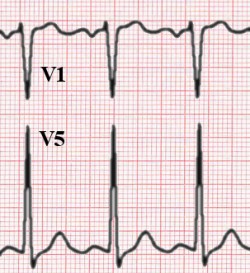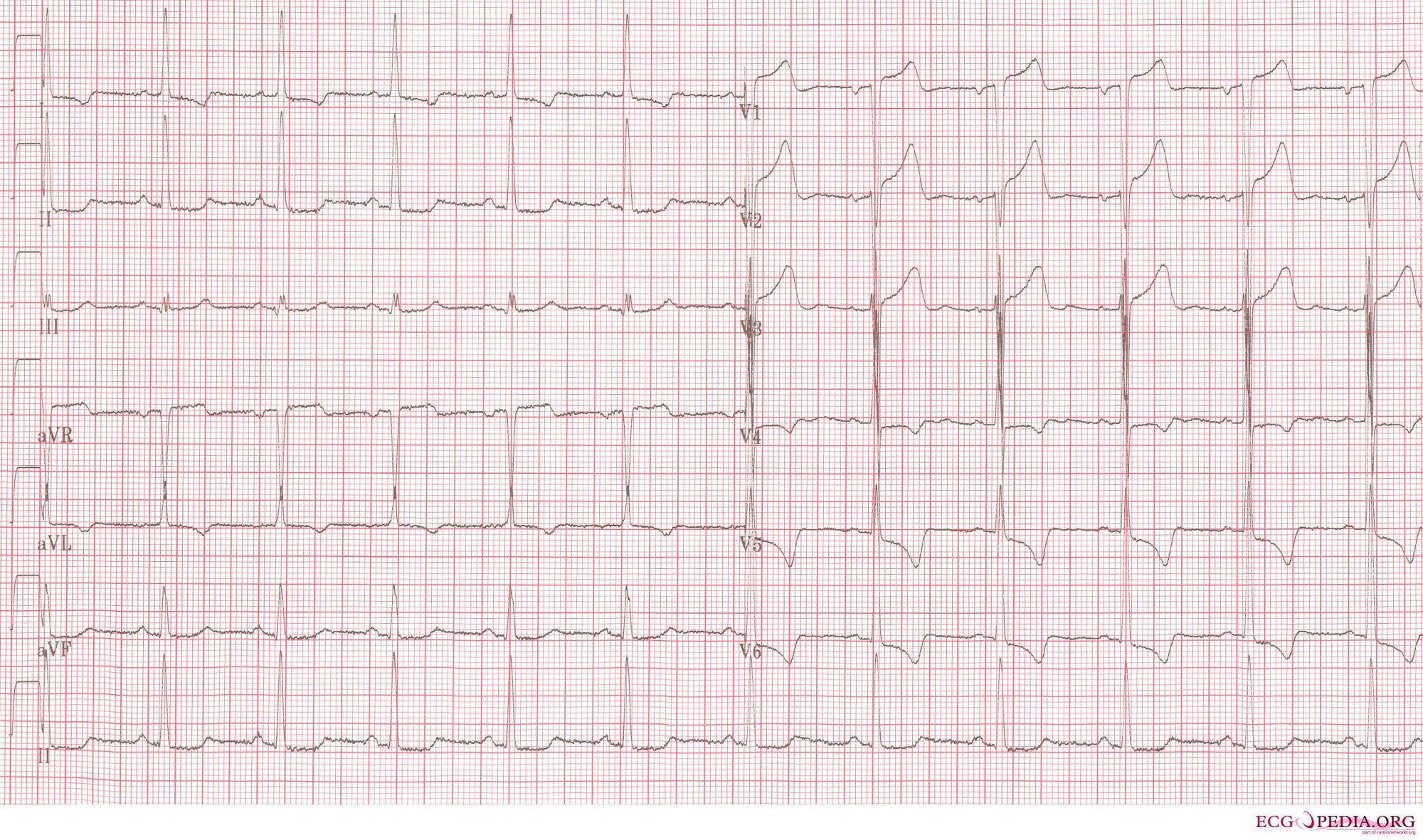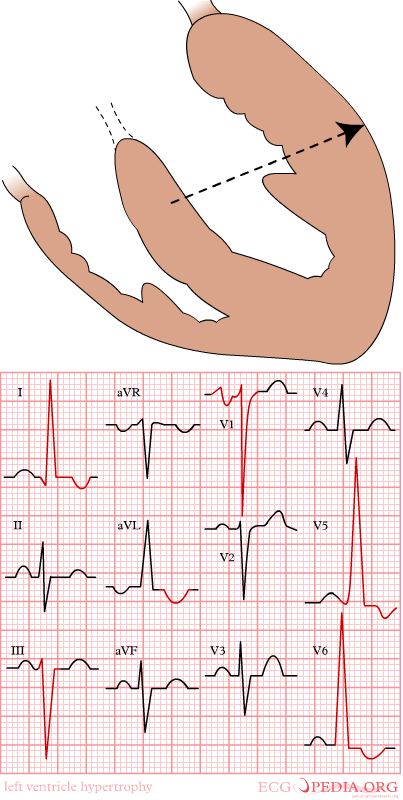Aortic stenosis electrocardiogram
|
Aortic Stenosis Microchapters |
|
Diagnosis |
|---|
|
Treatment |
|
Percutaneous Aortic Balloon Valvotomy (PABV) or Aortic Valvuloplasty |
|
Transcatheter Aortic Valve Replacement (TAVR) |
|
Case Studies |
|
Aortic stenosis electrocardiogram On the Web |
|
American Roentgen Ray Society Images of Aortic stenosis electrocardiogram |
|
Directions to Hospitals Treating Aortic stenosis electrocardiogram |
|
Risk calculators and risk factors for Aortic stenosis electrocardiogram |
Editor-In-Chief: C. Michael Gibson, M.S., M.D. [1]; Associate Editor(s)-In-Chief: Mohammed A. Sbeih, M.D. [2]; Lakshmi Gopalakrishnan, M.B.B.S. [3]; Assistant Editor-In-Chief: Kristin Feeney, B.S. [4]
Overview
The electrocardiogram in the patient with moderate to severe aortic stenosis may reveal left ventricular hypertrophy and heart block.
Electrocardiogram
- Although there are no specific findings on the EKG, the presence of left ventricular hypertrophy (LVH) secondary to chronic pressure overload of the left ventricle due to aortic stenosis is commonly observed.
- Progressive calcification of the aortic valve may extend beyond the valve and may result in conduction abnormalities of the heart including heart block.
- Progressive concentric hypertrophy of the left ventricular wall may lead to larger QRS complexes, especially observed in leads V1-V6. The S wave in V1 is deep, the R wave in V4 is high. Often some ST depression can be seen in leads V5-V6, which is in this setting is called a left ventricular strain pattern.
EKG Criteria for LVH
- To diagnose left ventricular hypertrophy on the EKG one of the following criteria should be met:
- Sokolow-Lyon criteria:
- R in V5 or V6 + S in V1 >35 mm.
- Other criteria:
- R >26 mm in V5 or V6.
- R >20 mm in I, II or III.
- R >12 mm in aVL (in the absence of left anterior fascicular block).
- Cornell-criteria has different values in men and women:
- R in aVL and S in V3 >28 mm in men
- R in aVL and S in V3 >20 mm in women
Examples of EKG Findings in patients with AS
Left Ventricular Hypertrophy

Severe LVH in a patient with Severe Aortic Stenosis
Patient with LVH and Subendocardial Ischemia

LVH & Left Ventricular Strain Pattern

2008 ACC/AHA Guidelines for the Management of Patients with Valvular Heart Disease - Evaluation of Asymptomatic Adolescents or Young Adults With Aortic Stenosis (DO NOT EDIT)[1]
| Class I |
| "1. An ECG is recommended yearly in the asymptomatic adolescent or young adult with AS who has a Doppler mean gradient greater than 30 mm Hg or a peak velocity greater than 3.5 m per second (peak gradient greater than 50 mm Hg) and every 2 years if the echocardiographic Doppler mean gradient is less than or equal to 30 mm Hg or the peak velocity is less than or equal to 3.5 m per second (peak gradient less than or equal to 50 mm Hg). (Level C)<nowiki>" |
Sources
- 2008 ACC/AHA Guidelines incorporated into the 2006 guidelines for the management of patients with valvular heart disease [1]==
References
- ↑ 1.0 1.1 Bonow RO, Carabello BA, Chatterjee K; et al. (2008). "2008 Focused update incorporated into the ACC/AHA 2006 guidelines for the management of patients with valvular heart disease: a report of the American College of Cardiology/American Heart Association Task Force on Practice Guidelines (Writing Committee to Revise the 1998 Guidelines for the Management of Patients With Valvular Heart Disease): endorsed by the Society of Cardiovascular Anesthesiologists, Society for Cardiovascular Angiography and Interventions, and Society of Thoracic Surgeons". Circulation. 118 (15): e523–661. doi:10.1161/CIRCULATIONAHA.108.190748. PMID 18820172. Unknown parameter
|month=ignored (help)
- Pages with citations using unsupported parameters
- CS1 maint: Explicit use of et al.
- CS1 maint: Multiple names: authors list
- Pages with broken file links
- Disease
- Signs and symptoms
- Physical Examination
- Valvular heart disease
- Cardiology
- Congenital heart disease
- Mature chapter
- Cardiac surgery
- Surgery
- Overview complete
- For review
- Template complete